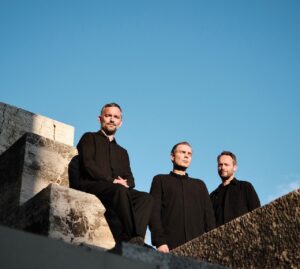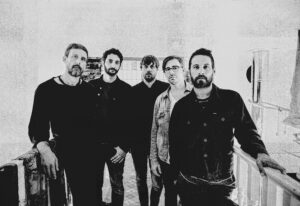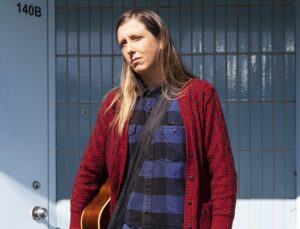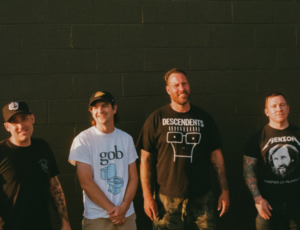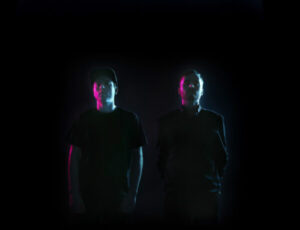Perched at the corner of 8th and Hemlock Street, The Peak office overlooks False Creek, Downtown and, given a clear day, the North Shore mountains. From her swivel chair, the disc jockey can see the radio booth’s reflection in the Yaletown condos if the sun is right. And when the rain sends citizens scurrying from the seawall back into the public market on Granville Island, The Peak pulses on above the recurrent clouds. But what’s the climate of Vancouver music?
I met with Program Director Tamara Stanners to find out about The Peak Performance Project and what it means to be at the heart of the city.
I’m sure we’ve all heard it talked up on the radio but what is it all about? “The Peak Performance Project,” the website describes, “is a professional development program to help new and emerging artists create careers in the music industry.” In a partnership with Music BC, The Peak launched the contest in 2008. A $102,700 prize awaits the winner. The PPP’s guidelines stipulate that all participants must not only be Canadian citizens or landed immigrants, but also residents of British Columbia. This emphasis on BC permeates the site’s literature.
In fact, fostering the Vancouver music scene is Stanners’ foremost wish too. Her passion for radio has had a considerable lifespan. Starting out when she was only six years old, dj’ing at a carnival (no doubt to maximum adorability), Stanners got her first professional job when she was nineteen. She proved a reliable representative of Vancouver music as, in 2008, after having spent seven years away from radio, she was invited back by her original boss to help develop the embryonic Peak. Further, she would helm the Performance Project itself. Her goal was to get local artists on the radio.
The Project, however, as I came to learn, focuses on more than getting bands transmitted over FM airwaves. Although songs by 2012’s Top 20 do quite often bellow out the rolled-down windows of my automobile (weather permitting of course), those same twenty inductees, importantly, are engaged concurrently in all sorts of rigorous professional training as well. “We try to give them every tool they need to succeed,” remarked Stanners. Admittedly, ‘professional training’ may seem like a stretch for musicians, but trust me this toolbox is seriously well stocked. First off, the participants learn to handle paperwork, an important skill for writing grants. Each year the application deadline arrives in April and the Top 20 are announced in June. From then on the work schedule is fast paced, focused and full-bore. Salmon Arm native Dominique Fricot has cracked the Top 20 twice, once in 2008 as a member of ‘The Painted Birds’ and again this year as a solo singer-songwriter act. “It’s hard work,” he confessed, “my eye has been twitching for weeks.” Equipped with a $4000 entry prize, each artist is tasked with some distinct challenges of which creating a social media campaign, writing a press release and hawking merch constitute the marketing component. “They taught us that any money we spend on an album or a tour should be matched in advertising dollars. It’s like a rule of thumb,” Fricot averred.
The artists receive guidance and judgment, not only with respect to their performance and recording skills, but also on their use of this preliminary endowment. Can they make the money work for them? Whistler-raised Ali Milner, who self-describes as a soulful songstress, invested in graphic design and unifying her social media platforms. “It’s really important to create a consistent image,” she indicated.” Australia-extracted Andrew Phelan, Toronto-born John Hayes and Campbell River’s Keenan Lawlor, a.k.a. the bearded boys of ‘The River and the Road,’ were freshly returned from a charity fundraiser when I met with them. (Charity is another of the Project’s criteria). Phelan described the whole process as something akin to learning to function as a “D.I.Y. company.” Along with arduous hands-on career preparation, each of the PPP descriptions I gleaned also stressed the concept of community.
“Creativity, business and bonding,” Stanners edifies three pillars of the Project, “we try to develop a real strength of community.” They all recognized the centrality of this particular aspect. Fricot, talkative and tickling a MacBook, accentuated the importance of “attracting a team,” and tea-sipping Milner witnessed, “tightly knit friendship and collaboration.” So how does this bonding take place? The better question would be ‘where,’ as the location might help elucidate the process.
In late August, after a frenzied spring/summer of getting their shit together, the artists are sent to a rustic, if picturesque, Manning Park retreat. This is Bootcamp. They’re up at 7am; tutorials, lectures, practice and activities all day; three square meals and they spend many an entire night writing and recording music. Though grueling, Bootcamp is fun— they’re musicians remember, it can’t all be work— and tremendously instructive. Numerous industry pros show up to offer advice. Fricot recalled a speech given by Ryan Guldemond of ‘Mother Mother,’ “he taught us how to eat cheap and healthy on tour.” “The key’s a rice cooker,” affirmed Milner.
Stanners pointed out that “the Peak’s only able to scratch the surface of all the good music” in Vancouver, though the PPP does represent and bolster a specific musical community within it. “It’s been good for a particular westside scene,” Fricot elected, suggesting that there was much artistic activity in the eastside that doesn’t really turn up in something like the PPP.
Still, the city— specifically the Project— seems a magnet, enticing talent from all over the province. None of the artists I met with were raised in Vancouver. Though about half of the PPP’s contestants were Vancouver-bred, others like ‘Fields of Green,’ Alexandria Maillot and T. Nile came from Kelowna, Parksville and Galiano Island respectively. A coalescence of diverse regional locales emerges, allowing for some variety in the contest’s artistic output. Milner cited Georgia Murray and ‘beekeeper’ as particularly unique acts. “Everyone is good at what they do,” she relished.
Community means being able to share rehearsal space with other bands. It means being able to organize shows together and employ the same outstanding violinist or trumpeter. It means saving money on merch by buying in bulk. When I met with ‘The River and the Road,’ the sense of comradery among the band mates was obvious. Then, Lawlor pointed out the window at a man walking past our coffee shop and declared, “look there’s a guy from ‘Headwater,’” another of the bands in the Project. Coincidence notwithstanding, PPP contestants seem pulled by the same force of gravity. Watching them eagerly watch each other perform at the live showcase nights exhibited their collective glue. The Project strives to engender this closeness between its participants, all of them engaged in the same uphill battle for an audience.
Attention is the single most important thing needed for Vancouver’s music industry to flourish and strengthen. “ From radio, TV and the people of Vancouver,” Stanners stressed, “AND funding. The PPP is putting close to a million dollars into the industry every year. But we only have seven years of guaranteed funding.” The Pattison Group, whom she lauds sincerely, began providing it in 2008. Stanners, returned to radio that year expressly to stimulate local music. She continues to see the significance of this city’s music. “So, I think the provincial and federal governments should take an active role in funding music and arts programs right across Canada. Without the arts we really have nothing to enrich our hearts.”
The artists I interviewed agree that Vancouver is too small to play too often, an easily oversaturated market. Too few venues to perform at and too few fans willing to get out of their houses, let alone come to your show. Alas, a Facebook Like only goes so far. However, among those involved in the Peak Performance Project, the hope is unified: that despite the approaching rainy autumn blues, the clouds will soon lift on this city’s live music, an industry that’s earned its day in the sun.
